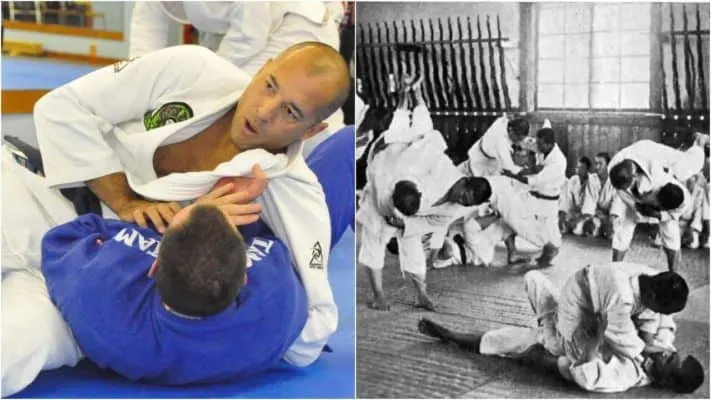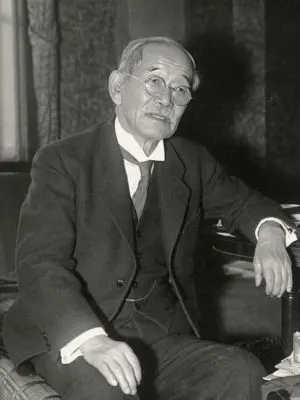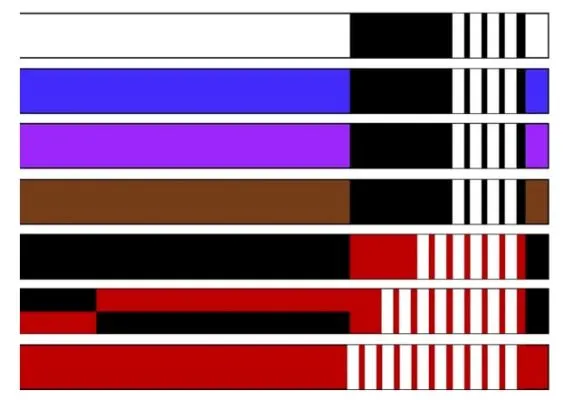
Japanese Jiu-Jitsu (JJJ) a.k.a “Japanese Jujutsu” and Brazilian Jiu-Jitsu (BJJ) are two separate martial arts. However, many people can be confused because they share a similar name. If you are also unsure of the differences between the two disciplines, this article explains all the important questions related to these two arts.
JJJ and BJJ share techniques such as joint locks, chokeholds, grappling and takedowns. However, BJJ does not teach the strikes or throws seen in JJJ. Both arts promote discipline, respect and integrity in their students, but the grading system varies and BJJ has a higher focus on competitions.
I will explain these differences and similarities in much more detail below. I have also included the origins of both BJJ and JJJ and how they are related to one another, as well as where you can find a JJJ school and how it compares to BJJ.
What is the Difference Between Japanese Jiu-Jitsu and BJJ?
Japanese Jiu-Jitsu (JJJ) is an ancient martial art that includes hundreds of techniques, which I will explain throughout this article. There are many martial arts based off of these traditional techniques, including Judo and Brazilian Jiu-Jitsu (BJJ). I will explain more about their relationship further down, but below are the key differences between JJJ and BJJ.
Techniques
In regards to technique, the differences between JJJ and BJJ lie in the type of techniques that are taught to the students. JJJ includes a wider variety of techniques compared to BJJ, including distance fighting (strikes), close-quarter fighting (throws) and ground fighting.
BJJ focuses primarily on ground fighting, but will also incorporate close-quarter fighting (grappling and takedowns) with the sole purpose of getting the opponent to the ground.
The reason BJJ will train students to bring their opponent to the ground is that your opponent loses most of their power when on the ground. An attacker on the ground can no longer use their entire body to throw a punch or throw you. This helps to protect you from fatal strikes or falls.
BJJ focuses more on techniques that will render your opponent harmless, whereas JJJ will also teach techniques that are considered offensive, such as striking. Below is a summary of different types of techniques used in each discipline.
| Japanese Jiu-Jitsu | Brazilian Jiu-Jitsu |
| Joint locks Chokeholds Grappling Strikes Takedowns Throwing | Joint locks Chokeholds Positional grappling Takedowns Sweeps |
Purpose
JJJ was originally created for use on the battleground, where both offense and defense are necessary to defeat your enemy. This meant that practitioners would learn to defend themselves against trained and armored opponents, as well as weapons. They would be taught to disarm, neutralize and ultimately defeat their opponents.
In modern schools of JJJ, students still learn most of these dangerous techniques but are taught ‘break falling’, a method of practicing dangerous throws safely for the purpose of training. Any weapons that are used (in the more traditional schools) are usually wooden for sparring.
BJJ, on the other hand, teaches students how to defend themselves in a safe way for both themselves and their attacker. The purpose is not to defeat their opponent, but to neutralize them so that they are no longer a threat.
For this reason, BJJ does not involve weapons of any kind or disarming techniques. BJJ practitioners are taught to avoid the fight wherever possible and to only use their training in a self-defense situation. The one exception to this is competition Jiu-Jitsu.
Sport and Competitions
As a BJJ practitioner, you can compete in the IBJJF World Championship, Abu Dhabi World Pro, Pan American, Brazilian Nationals, European Open Championship, Asian Open Championship, UAEJJF Grand Slam, Jiu-Jitsu World League and SJJIF Worlds. These are all well-known Jiu-Jitsu competitions.
However, without a BJJ belt ranking, a JJJ practitioner cannot compete in any of the above. This is because the belt ranking system in JJJ is different to that in BJJ, which I will explain further down. Some of these competitions, such as the IBJJF tournaments, even require the competitor to be a registered BJJ practitioner within their organization to compete.
Even if a JJJ used the same belt system, the rules in these competitions also align with the techniques practiced in BJJ. Points are only awarded for takedowns, sweeps, knee on belly, passing the guard, back control, back mount and mount.
Japanese Jiu-Jitsu practitioners are likely to have learned these techniques, but there are other JJJ techniques that are prohibited, such as strikes. Other techniques, such as throws, are legal provided they are not considered a ‘slam’. However, these will not accrue any points, making them impractical. This is why those who want to compete will join a BJJ academy.
Belt System
Japanese Jiu-Jitsu originally did not use a belt system. This system was introduced by Jigorō Kanō in his Judo school and adopted by other martial arts in the years that followed. Modern Japanese Jiu-Jitsu schools have adopted a belt system that mimics the Judo belt system.

Therefore, Japanese Jiu-Jitsu Schools that use a belt system have adopted the Judo system. This includes a series of colored belts, known as ‘Kyu’ belts, followed by different degrees of black belt, or ‘Dan’ belts.
There is some variation among schools in the colored belts, but the black belt system is the same, which I will explain further down. Of the colored belts, there is usually a white, yellow, orange, green, blue, purple and brown belt.
Although BJJ practitioners have also adopted the Judo belt system, it has been modified so that there are only four belt colors before black belt. These include the white, blue, purple and brown belt. BJJ also discarded the use of the terms ‘Kyu’ and ‘Dan’, simply referring to each practitioner by their belt color.
There are also interim stages between each belt color. In Judo and JJJ, this involves receiving one colored stripe on your Kyu belt before progressing to that color. In BJJ, this involves receiving a series of ‘tips’ or ‘stripes’ on each belt before progressing to the next color, with a total of four tips for each colored belt before black belt.
Grading
The grading system between JJJ and BJJ is also quite different. For BJJ, this involves training with a black belt and being awarded when they believe you are ready. The black belt promotes their students based on observation regarding their performance during training sessions.
A JJJ school, on the other hand, has formal grading, where the student must perform a series of techniques in front of their assessor in order to be deemed worthy of a promotion.
Those without a belt system still have a formal grading to deem the student competent. Most JJJ school also incorporate Japanese theory into their syllabus, such as the history of Jiu-Jitsu or relevant Japanese terminology.
What are the Similarities between Japanese Jiu-Jitsu and BJJ?
There are also a number of similarities between the two arts. This is to be expected when you consider that BJJ was based off of Mitsuyo Maeda’s knowledge of JJJ and Judo.

Techniques
As I mentioned above, the techniques themselves are quite similar between BJJ and JJJ. Although BJJ does not include throws or striking, the joint lock, chokehold, grappling and takedown techniques are the same.
For example, the principles of an arm bar are the same in both disciplines, pulling the opponent’s arm back until the elbow locks and hyperextends. One key difference is that joint locks or chokeholds can also be performed standing in JJJ.
Black Belts
The black belt system is standard across JJJ and BJJ. Although the black belts in BJJ are not referred to as ‘Dan’, black belts will still progress one degree at a time. They will progress until they reach the point of receiving their red/black belt, red/white belt and their red belt as a higher-degree black belt.

One difference that sets the two black belt systems apart is that the red belts are awarded at different stages in the black belt system. In JJJ, the red/white belt (‘coral belt’) is awarded as a Roku Dan (6-stripe black belt), whereas red belt is only awarded to ninth and tenth degree BJJ black belts. According to Renzo & Royler Gracie, red belt is reserved for the following black belts only.
“for those whose influence and fame takes them to the pinnacle of the art”
Bjjee.com
Discipline, Respect and Integrity
All martial arts have carried on the ancient practices of discipline, respect and integrity. These are all still an important aspect in both BJJ and JJJ.
Discipline refers to obeying the rules of the dojo and adhering to a particular code of behavior. Students are taught to stay in control of their own bodies and mind by refraining from alcohol and drugs and overcoming things like anger issues that would alter their behavior. In saying that, not all students will heed this advice.
Respect includes showing respect for your teachers, dojo and other students. For example, BJJ students will often perform a ‘fist bump’ before and after each training session as a sign of respect. This can be likened to JJJ students bowing to one another. Both disciplines still bow to their masters before and after training.
Integrity is a big part of martial arts, particularly when it comes to your skill level. There have been cases of people purchasing a black belt online so that they can start their own dojo and charge inexperienced students for lessons. This is a great breach of integrity, and it is the integrity of others that usually exposes these people.
What is Japanese Jiu-Jitsu?
Japanese Jiu-Jitsu is an ancient martial art, derived from the word ‘Jūjutsu’. When spoken and written in the English language, ‘Jūjutsu’ became known as ‘Jiu Jitsu’, mainly because of the shorter pronunciation of the letter ‘u’ in ‘Jutsu’. However, they both mean the same thing.

The word ‘Ju’ means ‘gentle’ or ‘yielding’ and the word ‘Jutsu’ means ‘art’ or ‘technique’. This is why Jiu Jitsu is often known as ‘The Gentle Art’. It is described as offensive and defensive techniques that use any opponent’s body against them, instead of using a weapon. However, JJJ did sometimes incorporate the use of small weapons, such as knives or clubs.
The term Jiu-Jitsu first began leading up to the Edo period, a time of peace for Japan. This martial art emphasized subduing your opponent without causing them serious harm. Teachers also began incorporating lessons that strengthened the student’s mind.
During this time, JJJ was influenced by the philosophy of Zen, which aims to focus one’s mind and bring inner peace. From a martial art perspective, this gave the practitioner the ability to remain calm when in a threatening situation.
As time went by, different styles and schools of Jiu-Jitsu developed, with teachers including their own techniques. This made Jiu-Jitsu a very broad term, and it is therefore difficult to assign a single group of techniques to the art.
For this reason, there is no unified order to learning the techniques. As conveyed by the Jujitsu division of the United States Judo Association (link here), students are instead graded based on how many of each type of technique they have mastered.
Both Judo and BJJ derived from Japanese Jujutsu, and there is so much more to learn about Japanese Jujutsu. This article, “What is Japanese Jujutsu? Here’s What You Should Know”, will explore deep into Japanese Jujutsu.
Is Jiu-Jitsu Japanese or Brazilian?
As I mentioned, the term ‘Jiu Jitsu’ comes from the Japanese word ‘Jujutsu’, meaning the ‘gentle art’. The techniques themselves, such as a chokehold, cannot be traced throughout history, but the combination of these techniques into the art of ‘Jiu Jitsu’ is fundamentally Japanese.
It wasn’t until these techniques were modified by Jigoro Kano and passed on to Mitsuyo Maeda that Japanese Jiu-Jitsu made its way to Brazilian shores. Kano’s modifications birthed the art of Judo, which Maeda then introduced to Brazil.
One of Maeda’s student’s was Carlos Gracie and his sons. His weakest and smallest son, Hélio, had to modify these techniques to allow him to keep up with his brothers in the art. These techniques were then passed onto Hélio’s children and introduced to the world by Royce Gracie through the UFC, beginning what is now known as Brazilian Jiu Jitsu.
RECOMMENDED FOR YOU: What Is American Jiu-Jitsu(AJJ)? Beginners Guide To AJJ
Is Japanese Jiu-Jitsu Effective for Self Defense?
Japanese Jiu-Jitsu still teaches relevant self-defense techniques such as grappling with your opponent and using submission techniques such as chokeholds and joint locks. However, it is reasonable to believe that they are not applicable to all body shapes and sizes, which I will explain.
The reason Brazilian Jiu-Jitsu was formed was because Carlos Gracie’s youngest and weakest son, Hélio, was unable to keep up with his brothers in their Jiu-Jitsu and Judo training. These techniques, passed on from Mitsuyo Maeda, were already tailored to accommodate the smaller size of Judo founder Kano Jigoro.
The fact that Hélio still could not defend himself effectively against his brothers demonstrated that these techniques were not applicable to everyone. Hélio’s adapted techniques were passed on to his own children, including Royce Gracie. Royce then went on to prove that the techniques were effective, even against trained fighters in the UFC.
A good self-defense technique should be applicable to all people, regardless of size. This is particularly important because it is generally smaller, weaker people that are targeted in attacks.
For this reason, Japanese Jiu-Jitsu techniques will provide you with the knowledge of self-defense, but it may not be applicable to weaker people facing a real-life self-defense situation. In saying that, any knowledge is better than none.
Is Japanese Jiu-Jitsu Still Practiced?
Japanese Jiu-Jitsu is certainly not as popular as BJJ, and schools that teach JJJ are harder to come by. Pure JJJ is known as ‘Koryū Ju Jutsu’, meaning ‘traditional Jiu Jitsu’. Koryū Ju Jutsu was still widely practiced until Japan’s defeat in WWII and the death of many JJJ practitioners.
Now, most instructors of JJJ are certified through a governing body, such as the United States Ju-Jitsu Federation (USJJF). They will usually teach out of mixed martial arts schools. Sometimes they will even combine Jiu-Jitsu and Judo techniques in the same class. On the USJJF website, you can find a list of schools that offer Japanese Jiu-Jitsu.
There are still some instructors that try to keep the purity of Jiu-Jitsu, such as Sensei Anna Seabourne, one of the highest-qualified instructors outside of Japan who teaches ‘Takenouchi-ryū’.
Takenouchi-ryū was founded in 1532 and is considered one of the oldest forms of Japanese Jiu-Jitsu. After studying the traditional art for 12 years in Japan, Seabourne now passes on her knowledge in her UK-based dojo.
However, even Takenouchi-ryū techniques are not entirely Jiu-Jitsu in nature. This ancient art also includes the use of staffs, swords, fans, ropes and healing techniques. For this reason, the style of JJJ that does not use weapons and is governed by organizations such as the USJJF is more fitting for our modern interpretation of the ‘gentle art’ of Jiu-Jitsu.
These modern schools will teach a selection of techniques that are more applicable to the lifestyle and needs of the students of today. Of the hundreds of JJJ techniques available, the techniques that are chosen will prepare the students to defend themselves in current society.
Which is Better to Practice? BJJ vs Japanese Jiu-Jitsu
The differences between Japanese Jiu-Jitsu and BJJ may be enough for you to choose one over the other. As I mentioned earlier, BJJ seems to be a more effective method of self-defense because it is more applicable to individuals of any size and fitness level.
In addition to this, if you would like to compete in Jiu-Jitsu, BJJ offers the opportunity to compete in many countries around the world. There are also more BJJ schools, making it more likely that you can find a dojo near where you live.
However, if you would like to learn a broader range of skills, including striking and throwing, JJJ’s rich history offers hundreds of techniques to choose from. It is also a good martial art to learn if you enjoy Japanese culture and traditions. Some of these, such as the use of the traditional Japanese names, have become lost in Brazilian Jiu-Jitsu.
RECOMMENDED FOR YOU: What’s the Difference Between Gracie Jiu-Jitsu and BJJ?
